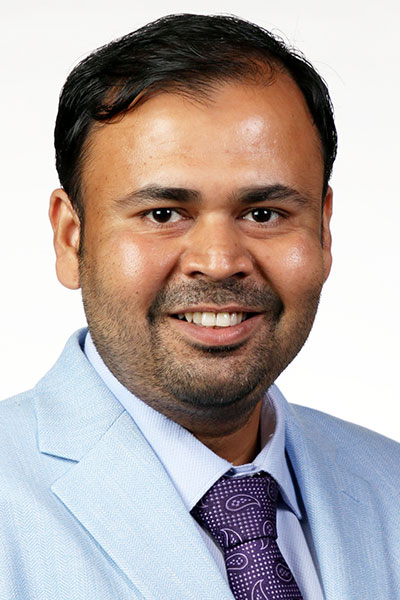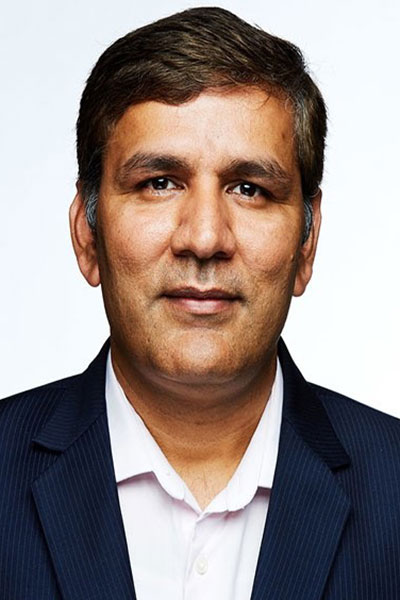2025 PRESENTER PROFILES
Unraveling the Code—Multiomic Insights into Diabetic Foot Ulcer Healing
Sunday, June 22, at 8:00 a.m. CT
Room W180 • McCormick Place Convention Center
Understanding Cellular Heterogeneity of Diabetic Foot Ulcer Using Single-Cell RNA Sequencing

Kanhaiya Singh, PhD
Associate Professor,
University of Pittsburgh
What is your presentation about?
Diabetic foot ulcers (DFU) are one of the most common reasons for hospitalization of patients with diabetes and frequently results in amputation of lower limbs. DFU comorbidity is known to involve dysregulation of crosstalk among cells that are resident and visiting. With the use of single-cell RNA sequencing (scRNA-seq) technology, it is now possible to determine cellular heterogeneity at very high resolution. This presentation will delineate the changes in cellular heterogeneity associated with impairment of wound healing in DFU subjects.
How do you hope your presentation will impact diabetes research or care?
1. The knowledge of differentially abundant cellular subsets in non-healing diabetes-related wounds will guide the design of future cell-based therapies.
2. Perturbed intercellular signaling pathways, in particular, ligand–receptor pairs in DFU tissue can be utilized as potential biomarkers for non-healing wounds.
3. Applying gene-based therapies to improve healing outcomes in DFU subjects.
How did you become involved with this area of diabetes research or care?
I first became involved with the DFU research during my graduate studies. While working on human DFU subjects, I established that DFU tissue has high levels of pro-inflammatory markers due to uncontrolled hyperglycemia-driven epigenetic modifications. At the University of Pittsburgh, I am investigating the epigenetic mechanism in diabetic vasculopathy, employing tissue nanotransfection technology as a delivery platform to administer combination gene therapy for accelerating healing in diabetes-related wounds.
System Biology of Cell-Cell Communication in Diabetic Foot Ulcer

Manoj K. Bhasin, PhD
Professor of Pediatrics and Biomedical Informatics,
Emory School of Medicine
What is your presentation about?
The presentation will highlight how single-cell profiling combined with artificial intelligence (AI) is enabling us to dissect the roles of individual stromal and immune cell populations—as well as their cross-talk and interactions—in the healing process of diabetic foot ulcers. Our previous work identified a distinct subset of fibroblasts with stem-like and pro-inflammatory properties that play a key role in wound healing. Additionally, we have demonstrated that macroscopic AI-identified features of the wound provide important cues for predicting the chronicity of ulcers. Together, these findings suggest that integrating single-cell transcriptomics with macroscopic wound features can yield highly accurate prognostic biomarkers capable of stratifying patients at risk for impaired healing.
How do you hope your presentation will impact diabetes research or care?
Our work has identified a unique fibroblast population associated with the healing of diabetic foot ulcers, offering novel therapeutic avenues for the treatment of chronic, non-healing wounds. Furthermore, by integrating macroscopic DFU features with single-cell transcriptomic profiles, we have developed a prognostic biomarker capable of stratifying patients who are at high risk for impaired wound healing. These patients could benefit from more intensive or alternative treatment strategies, enabling a more personalized and effective approach to care.
How did you become involved with this area of diabetes research or care?
I have a strong personal and professional interest in diabetes care, as several of my family members suffer from this disease. Through observation and research, I have come to recognize the profound impact diabetes has on the progression and outcomes of many chronic conditions. Motivated by this, my lab focuses on leveraging cutting-edge omics technologies and AI-driven approaches to unravel the complexity of diabetes and its associated comorbidities. Our goal is to deepen our understanding of disease mechanisms and ultimately contribute to strategies that improve population health and personalized care for individuals with diabetes.


